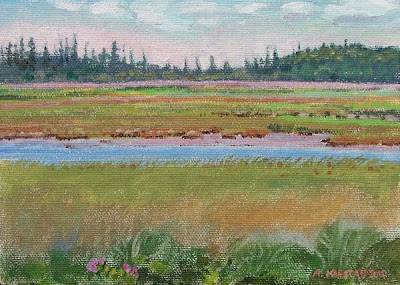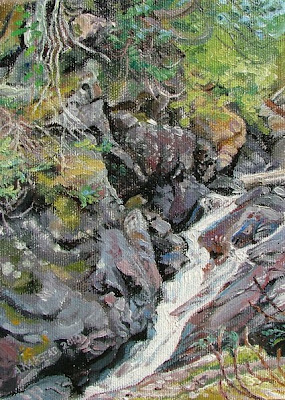Tide Flats in the Morning (oil on canvas 5 x 7 in.) Sold

27 August finds me still amazed by the tide at the mouth of the Walton River at Walton, Nova Scotia. We decided to spend the night here, to try again to find clams during the morning low tide today, as Adam came back last night without any. He had walked all the way out to open water without being sure of what to look for in terms of evidence of clams. It was a darkly cloudy afternoon, lightened a little toward evening, and then got dark so quickly just as the tide turned, that he would not have been able to find the shoes he'd left beneath the cliff if they hadn't been white. Without shoes, his return would have been painfully slow, and it would have been a race between a search party and the tide, which comes right up on the cliff, leaving no place to walk when it's high. My artist's eye is so excited by the sweeping bands of red and blue in this scene, that I'm grinning all the while I'm painting it. This is the other side of the river mouth from l...












